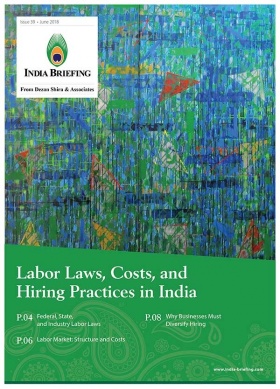COVID-19 in India: 5 Best Practices for Businesses Implementing Work-From-Home
- Due to the COVID-19 (coronavirus) outbreak, companies in India have asked their employees to work from home, at least until March 31.
- It is important for organizations to have protocols set for remote operations so that it does not affect the productivity of employees.
- We introduce a list of best practices that will enable organizations to create employee-centric policies that also ensure smooth business operations.
Amid the COVID-19 (coronavirus) outbreak, businesses across India have started operating on a work from home model. In all sectors, employees, barring those working in essential or emergency services, have been asked to work remotely as cases of COVID-19 continue to increase in India.
In his address to the nation Thursday evening, Prime Minister Narendra Modi encouraged employers to ensure work from home model to the extent possible due to the unprecedented nature of the pandemic. Various state governments have also advocated for remote working, including the Delhi government, that issued an advisory for private sector organizations, directing them to allow employees to work from home until March 31.
However, India is yet to announce any amendment within existing labor laws to accommodate changes caused in employment conditions due to COVID-19.
Navigating the work from home model can be difficult, especially for businesses that have no experience with remote operations. Therefore, it is important that management along with the legal and HR department come up with a set of guidelines for their employees to make the transition from being physically in office to remote collaboration smoother.
Here is a list of best practices that businesses in India can refer to while operating remotely. These tips will ensure smooth business operations and well-being of the employees. Follow the latest India COVID-19 updates here.
1. Special leave provisions
Earlier in the month, organizations such as Tata Steel had introduced special leave provisions for white and blue collar workers who might need to self-quarantine or stay away from the workplace due to COVID-19 exposure. Under this provision, employees could take a leave for any number of days they might need to recover. Further, the person would be entitled to full pay and other regular leaves, such as sick and privilege leaves, would remain unaffected.
While this policy was created when employees were still attending office, this can still be adopted by organizations who are operating remotely. Employers can extend paid leaves to employees if they or their immediate family (parents, children, or partner) have been infected by COVID-19.
As the number of COVID-19 cases are on the rise in the country, companies need to be flexible with their leaves structure in order to ensure the safety of their employees.
2. Continue internal communication
The remote operations are tentatively in place till March 31 for most companies and government employees in India. However, if COVID-19 cases continue to increase, it is likely that companies will have to extend with their work from home policy.
At this time, internal communication efforts by management and HR, such as weekly newsletters and employee of the month programs, should be continue. For instance, if HR conducts a monthly meeting on employee feedback, it can be conducted online instead of as an in-person meeting. The purpose is to keep employees engaged with the culture of the organization, even though the format of the meetings have changed.
HR can also introduce newsletters and initiate activities like teaching yoga or other exercises, discussing books, culture, and sport, or promoting team-based games. Since working from home / social distancing means limited human interaction, it can take a toll on the mental health of employees, so company activities, even if organized online, will be appreciated. Employee engagement, in turn, will boost worker productivity.
Therefore, it is not advisable for organizations to cancel HR initiatives, workshops and trainings – but rather it might be necessary to find creative ways to move it online. Meanwhile, HR can also work on sending a weekly email from the company leadership to maintain the morale of remote employees. This is a critical time for communication from the company’s senior management – it shows solidarity and appreciation for working during a time of heightened anxiety.
3. Use of technology
With the expanding role of technology in HR, especially to support the remote work culture, technology can be utilized to conduct meetings and collaborate on presentations.
HR along with the management should decide which communication tools employees will need to conduct daily or weekly conference calls. Popular tools include MS Teams linked to Microsoft Outlook as well as Skype and Zoom, the latter being free to use.
It is critical at this time that the internal IT department ensures employees have access to all the required apps and software on their laptops so they can continue their work without any interruption. Employees can also be provided secure access to the software through a virtual private network (VPN) to control against cyber intrusions or compromise of data security outside the office premises. The unprecedented shift in the workplace model also highlights why businesses should invest in an IT audit of their physical and cloud-based internet infrastructure.
Finally, the HR department should ensure staff are well-acquainted with online tools and remain available to employees in case they have any questions or concerns. This includes training all staff on use of ERP systems and other automated business processes – as working in collaboration becomes more important than siloed roles.
4. No to micromanagement
If the organization is working remotely for a long period of time for the first time, managers are advised not to micromanage their employees. This indicates the level of trust in the team. Constantly reaching out to employees might prove irksome, interrupt workflows, and give the impression that you do not trust them to fulfill their responsibilities.
However, this does not mean that employers and managers should not communicate with their employees and hold them accountable for their work. To avoid the pitfalls of micromanagement, respective departments should come up with a check-in plan whereby reporting managers establish a daily check-in time, login and logout hours, presentation schedules, and clearly set deadlines.
5. Make employees the priority
In the end, COVID-19 has caused panic and stress among people across the world. Your employees are probably scared and worried, and it could affect their mental, physical, and emotional health. Therefore, it is necessary that employees feel supported by their company during this time.
If employees are not a company’s priority, then it is likely that they will move on to a different organization once the pandemic ends.
If an employee is diagnosed with COVID-19, then it is advisable that the organization keep their identity confidential. However, HR should immediately inform all the employees, including the support staff, if an employee tests positive for the virus, along with identifying next steps in terms of isolation and testing.
India Briefing is produced by Dezan Shira & Associates. The firm assists foreign investors throughout Asia from offices across the world, including in Delhi and Mumbai. Readers may write to india@dezshira.com for business support in India.
- Previous Article Businesses in India May Have to Reflect COVID-19 Impact in Accounts, Say Auditors
- Next Article India’s Electronics Manufacturing to Benefit from 3 Schemes Worth US$6 Billion







